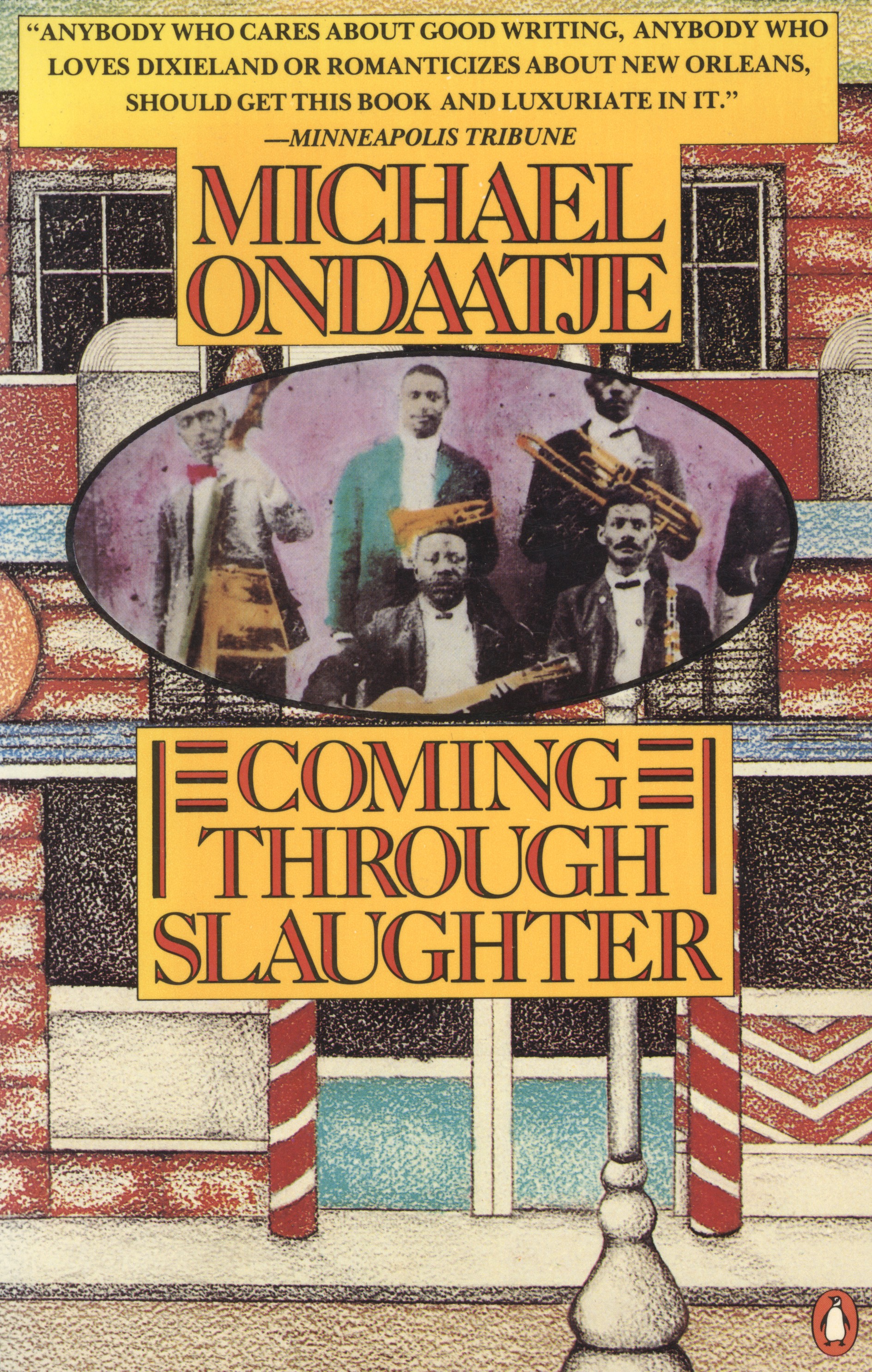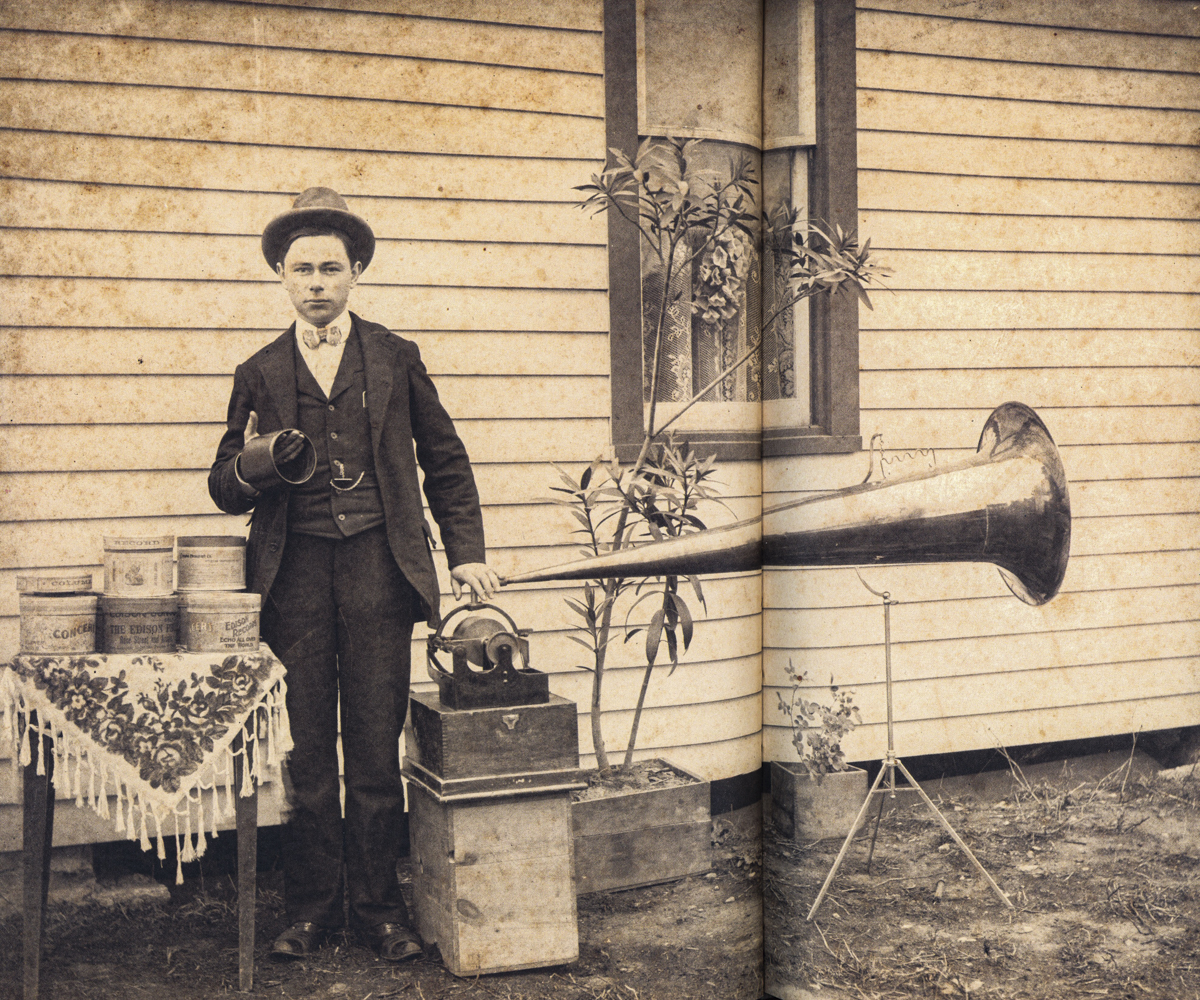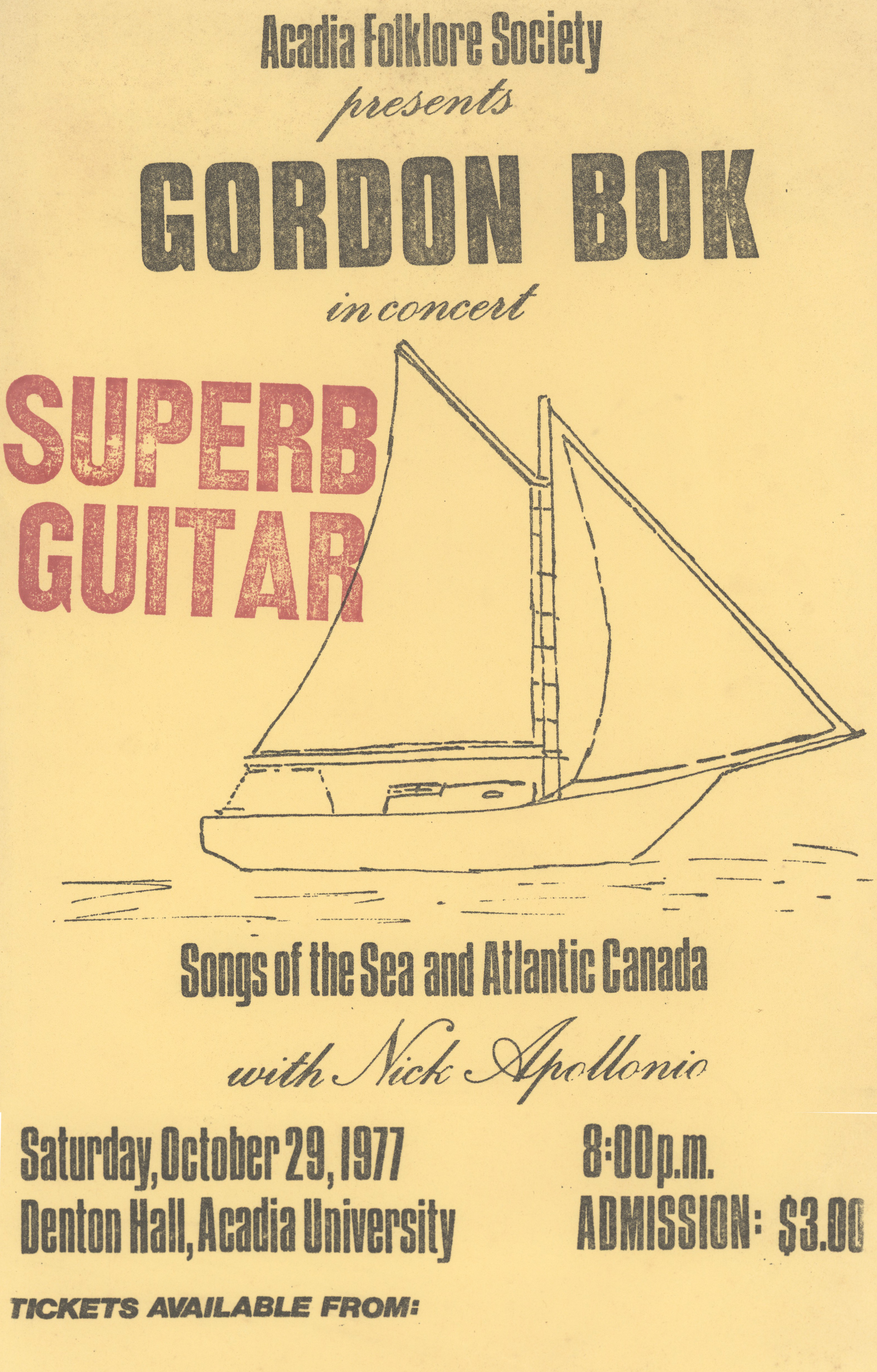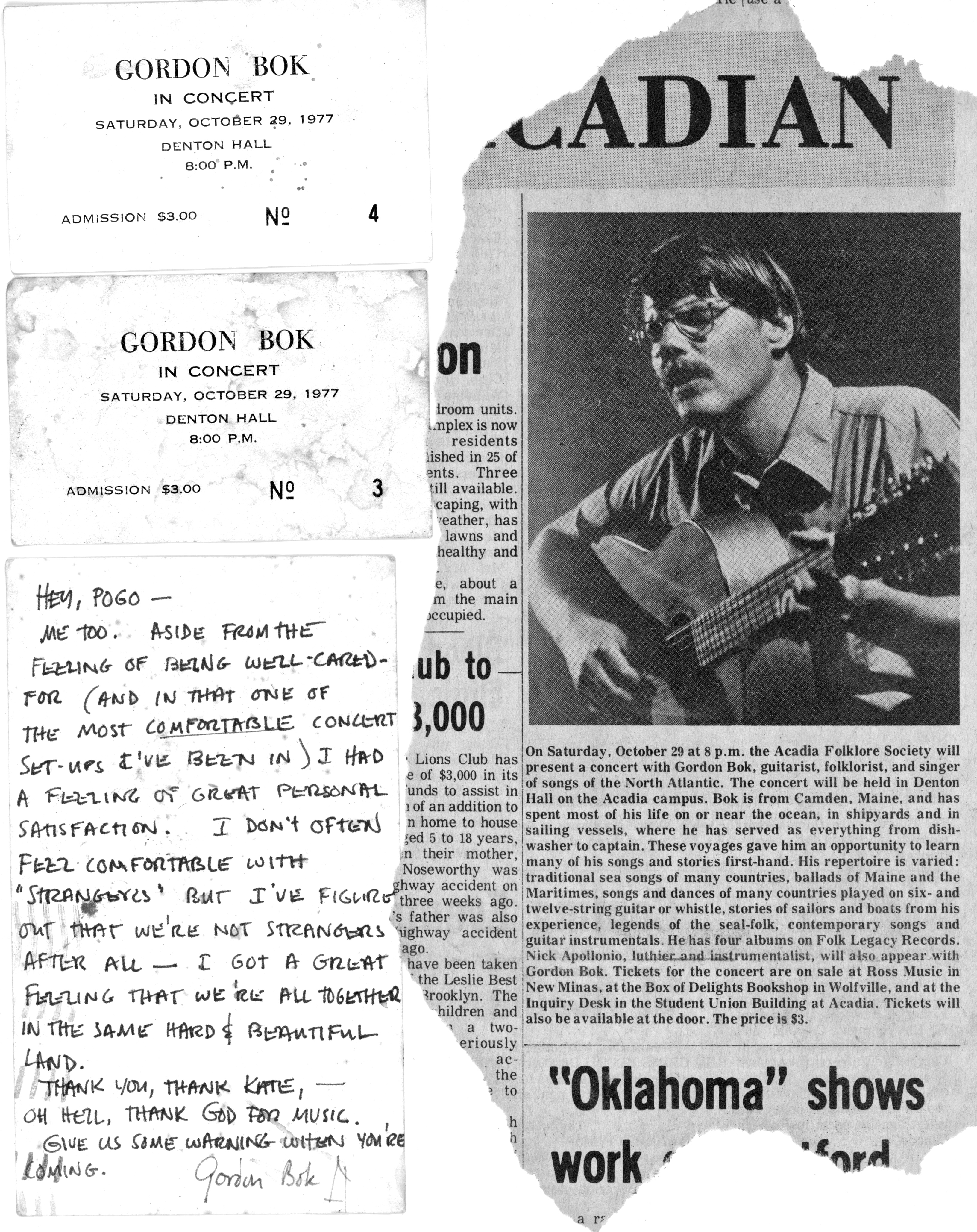This morning, while reading about the early years of phonograph and gramophone and thus the imprint of technology on the evolution of “popular” music, it occurred to me that there are two tales of music heard but not recorded that are foundational in the history of blues and jazz—that is, of the vital part played in Nacirema musical evolution by Black music(s) of the rural and urban South.
W.C. Handy
One tale finds bandleader W.C. Handy waiting for a train in Tutwiler, MS in (probably) 1903, and
A lean, loose-jointed Negro had commenced plunking a guitar beside me while I slept. His clothes were rags; his feet peeped out of his shoes. His face had on it some of the sadness of the ages. As he played, he pressed a knife on the strings of a guitar in a manner popularized by Hawaiian guitarists who used steel bars. The effect was unforgettable. His song, too, struck me instantly. ‘Goin’ where the Southern cross’ the Dog.’’The singer repeated the line three times, accompanying himself on the guitar with the weirdest music I ever heard.
(from Handy’s 1941 autobiography)…The song referred to the crossing of the Southern and Yazoo & Mississippi Valley railroads in Moorhead, forty-two miles to the south; the Y&MV (sometimes called the Yazoo Delta or Y.D.) was nicknamed the “Dog,” or “Yellow Dog.” After moving to Memphis in 1905, Handy adapted the blues into a series of compositions that helped sparked America’s first blues craze, including “Memphis Blues,” “Yellow Dog Blues,” “Beale Street Blues,” and, most popularly, the classic “St. Louis Blues.” He was already being hailed as the “Daddy of the Blues” by 1919.
(http://msbluestrail.org/blues-trail-markers/w-c-handy)
1925 Bessie Smith Yellow Dog Blues
1954 Louis Armstrong Yellow Dog Blues
2010 Tuba Skinny Yellow Dog Blues
Buddy Bolden
Some consider “Funky Butt” the oldest known jazz tune. It was Jelly Roll Morton (1885-1941) who bestowed the title “Buddy Bolden’s Blues” upon it and fashioned his own lyrics. Jelly made two commercial recordings of the song, in 1939, rendering it as a solo piano piece and as a band number. It is also included in the epic 1938 Library of Congress session that folklorist Alan Lomax recorded of Morton telling the story of his life, providing an account of the early years of jazz, and expatiating upon New Orleans history, all to the accompaniment of his piano. Jelly does the vocal on all three versions. And here is what he sings:
I thought I heard Buddy Bolden say You nasty, you dirty—take it away
You terrible, you awful—take it away
I thought I heard him say
I thought I heard Buddy Bolden shout Open up that window and let that bad air out
Open up that window, and let the foul air out
I thought I heard Buddy Bolden say
I thought I heard Judge Fogarty say Thirty days in the market—take him away
Get him a good broom to sweep with—take him away
I thought I heard him sayI thought I heard Frankie Dusen shout Gal, give me that money—I’m gonna beat it out
I mean give me that money, like I explain you, or I’m gonna beat it out
I thought I heard Frankie Dusen say
Several versions:
and via Spotify, versions by Jelly Roll Morton, Aruka Kikuchi, and Hugh Lawrie. And, for good measure, Sidney Bechet Buddy Bolden Stomp
This article by Luc Sante, from Believer (2004), is an excellent summary of the historical significance and musical and linguistic aspects of Bolden’s “Funky Butt”:
Jazz is too large and fluid a category of music to have had a single eureka moment of origin, let alone a sole inventor, but just about everybody agrees that no nameable person was more important to its creation than Buddy Bolden. He was a cornet player, born in 1877, and he got his first band together sometime around 1895. He was known for playing loud—stories of how far his horn could be heard sound like tall tales, but are so numerous there must be something to them—and for playing loose and rowdy. He was by all accounts the first major New Orleans musician to make a virtue of not being able to read a score. You can begin to get an idea of how distinctive his band was from looking at photographs. The traditional-style brass bands of the era wore military-style uniforms, complete with peaked caps, as their parade-band successors do to this day; the getups proclaim unison and discipline, even if the New Orleans version allowed for more latitude than was the rule among the oompah outfits active in every American village of the time. The orchestras—the term was then applied to non-marching musical agglomerations of virtually any size or composition—dressed in mufti, but their sedate poses attest to rigor and sobriety. The John Robichaux Orchestra may have had a big drum, as shown in an 1896 portrait, but its legendarily virtuosic members look as serious as divinity students, and by all accounts they played as sweetly.
Buddy Bolden’s band, on the other hand, is clearly a band, in the sense in which we use the word today. In the only extant photograph, circa 1905, each member has chosen his own stance, with no attempt at homogenization. They all rode in on different trolleys, the picture says, but up on the stage they talk to each other as much as to the audience. Drummer Cornelius Tillman is unaccountably absent. Shy Jimmy Johnson disappears into his bull fiddle. B-flat clarinetist Frank Lewis sits gaunt and upright as a picket. Willie Warner holds his C-clarinet with the kind of delicacy you sometimes see in men with massive hands. Jefferson “Brock” Mumford, the guitarist, looks a bit like circa-1960 Muddy Waters and a bit like he just woke up fully dressed and out of sorts. Willie Cornish shows you his valve trombone as if you had challenged his possession of it. Buddy Bolden rests his weight on his left leg, holds his little horn balanced on one palm, shoulder slumping a bit, and allows a faint smile to take hold of his face. You could cut him out of the frame and set him down on the sidewalk outside the Three Deuces in 1944, alongside Bird and Diz, and then the smile and the posture would plainly say “reefer.” You could cut him out of the frame and set him down on the sidewalk outside right now, and passing him you would think “significant character, and he knows it, too,” and spend the rest of the day trying to attach a name to the face.

You can’t hear the Bolden band, of course.They may actually have cut a cylinder recording around 1898, but the beeswax surfaces of the time were good for maybe a dozen plays, so it’s hardly surprising that no copy has ever been found.And then Bolden suddenly and dramatically left the picture. In March, 1906, he began complaining of severe headaches, and one day, persuaded that his mother-in-law was trying to poison him, he hit her on the head with a water pitcher. It was the only time in his life that he made the newspapers. His behavior became more erratic, he lost control of his own band, and then he dropped out of that year’s Labor Day parade in midroute—no small matter since the parade was an occasion for strutting that involved nearly every musician in the city. Not long thereafter his family had him committed for dementia. His induction papers cite alcohol poisoning as the cause, but modern scholars suggest it might have been meningitis. In any case he remained incarcerated and incommunicado in the state Insane Asylum at Jackson until his death in 1931, aged fifty-four. He missed the leap of the New Orleans sound to Chicago and beyond, the rise of Louis Armstrong (who, born in 1901, may have remembered hearing Bolden play when he was five), the massive popularity of hot jazz that finally allowed acquaintances and quasi-contemporaries such as Freddie Keppard and Bunk Johnson to record, however fleetingly or belatedly. His name became known outside Louisiana only when white researchers from the North began knocking on doors in the late 1930s. He achieved worldwide fame as a ghost…
But the band needs air. They need to fill their lungs to blow, remember? And the air is this yellow soup with filaments of monkey shit running around in it. So Bolden stands up, slices laterally with his hand, and the music stops, abruptly, right in the middle of the third chorus of “All the Whores Like the Way I Ride.” Then he stomps hard once, twice, three times to get the crowd’s attention. “For God’s sake open up a window!” he bellows. “And take that funky butt away!” The crowd laughs. People look around to see who the goat is or to shift blame away from themselves, as somebody with a pole topped with a brass hook finally pivots open the tall windows. Everybody knows that this will mean noise complaints and then probably a police raid, but nobody leaves. Finally Bolden blows his signature call, and the machine starts up again. Afterward, people straggling home keep hooting, “Take that funky butt away!” For days they shout it in the streets when they’re drunk, or they approach their friends very seriously, as if to convey something of grave significance, then let loose: “Take that funky butt away!” Various Chesters and Lesters in the area become “Funky Butt” for a week or a month, or for the rest of their natural lives. And then the hall, which everybody calls Kinney’s after the head of the Union Sons, starts being referred to as Funky Butt Hall, and the name sticks.
Cut to a week later, to a dance at the Odd Fellows and Masonic Hall, a couple of blocks down on Perdido and South Rampart. In the second part of the set, right after “Mama’s Got a Baby Called Tee-Na-Na,” when everything is getting loose and crazy, Willie Cornish stands up and starts singing: “I thought I heard Buddy Bolden say / Funky butt, funky butt, take it away…” There is a silence from the crowd, and then pandemonium. People can’t believe what they’re hearing. It’s as if the band had looked into their minds. And the song is more than a joke. It’s a fully worked-out rag, immediately memorable on its own merits, while the words are irresistibly singable, a banner headline set to music. If there were records available, and people owned record players, storekeepers would not be able to keep copies on their shelves. Within a week or two dockworkers are singing it, and well-dressed young people are whistling it, and barbers are humming it, and drunks are caterwauling it. New verses proliferate. The tune, which instantly calls up the memory of the original words, is annexed by comedians and political campaigners and every sort of cabaret singer. Most of the versions are filthy, some are idle, some topical. For a long time the song goes unrecorded on paper, since even its title is unprintable, until an enterprising—not to say larcenous—ragtime publisher finally copyrights a wordless piano arrangement entitled, for some reason,”St. Louis Tickle.”
For anyone who spent time at the dances and parades of black New Orleans at the very beginning of the century, though, the song will remain Bolden’s monument, his living memory for decades after he is first locked up and then stone-cold dead, as the long line of graybeard interviewees of the earnest young Northern jazz fans knocking on doors from the 1930s to the 1960s will attest. Buddy Bolden wrote other songs, some of them—although attribution is always uncertain—more famous than he ever was, but “Funky Butt” is not merely his song; in alchemical fashion it has replaced the man himself. But no version of the lyrics was set down until an entire generation and then some had gone by….
Morton’s recordings, for all their testamentary aspect and intent, can actually be seen as marking the start of a second life for at least one aspect of the song. Although funk is a versatile word, with secondary denotations of fear and depression and second-order thievery, the phrase funky butt would have clearly signified an odoriferous posterior for at least a century before Bolden famously used the phrase, and in context it can still be so interpreted. In the glossary of hepcat jive that Mezz Mezzrow inserted at the end of his memoir, Really the Blues (1946), funk is defined as “stench,” and funky as “smelly, obnoxious.” In less than a decade, however, the meaning of the word had begun to turn, at least in jazz circles, particularly on the West Coast.The scat singer King Pleasure, backed by Quincy Jones, put out a record called Funk Junction in 1954, and 1957 saw the issue of Creme de Funk by Phil Woods and Gene Quill, and of Funky by Gene Ammons’s All-Stars. In 1958 beatnik fellow-traveler John Clellon Holmes employed funk in a strictly musical sense in his novel The Horn, and not much later the word was being applied favorably to a performance by Miles Davis. By 1964 even the New York Times was throwing it around.
The word was in general currency from the early 1960s on as a musical term signifying some combination of authenticity, earthiness, greasiness, muscularity, perspiration, and the presence of one or more of the following: fuzz-tone bass, hoarse cries produced on the lower register of the tenor sax, a bottom-heavy and high-hat-intensive drum style, and a particularly dirty sound obtainable on the Hammond organ. The turning point came in 1966 when Arlester Christian wrote, and recorded with his band Dyke and the Blazers, the epochal “Funky Broadway,” which was covered and made into a huge hit by Wilson Pickett the following year. The way funky was employed in the lyrics did not refer to music, although it retained many of the cluster of meanings associated with musical use: authenticity, earthiness, greasiness, etc. All of these dove-tailed with and enlarged usefully upon the word’s original olfactory denotation, welcoming the noxious odor and giving it a room and a new suit without actually rehabilitating it. From there it was a short step to Arthur Conley’s “Funky Street” (1968), Rufus Thomas’s “Funky Chicken” (1970), Toots and the Maytals’ “Funky Kingston” (1973), and “Funky Nassau” by the Beginning of the End (1973), among many. James Brown virtually bought the franchise, from “Funk Bomb” (1967) through “Ain’t It Funky,” “Make It Funky,” “Funky Side of Town,” “Funky President,” “Funky Drummer,” and scads more from all quadrants of meaning by a man who spent a year or two calling himself “Minister of the New New Super Heavy Funk.” He had no peers atop the funk pyramid, or at least that was the case until George Clinton (of Funkadelic) concocted something like a theology of funk. (One of my proudest possessions is a T-shirt I can’t fit into anymore that is emblazoned with the legend “Take Funk to Heaven in 77.”) Clinton, in full evangelical feather, instituted a principle of spiritual surrender he termed “Giving up the Funk.” This was mana, total communion with the life force manifested as a fried fish.
Funk has climbed down from those heights. It has been devalued by George Michael’s “Too Funky,” and the Eagles’ “Funky New Year,” and “Funky Funky Xmas” by the New Kids on the Block, not to speak of the lingering memory of Grand Funk Railroad. But the word has not been shucked. It is too valuable. It appears in hiphop strictly as a place-marker (the Notorious B.I.G.’s “Machine Gun Funk,” Too Short’s “Short but Funky,” OutKast’s “Funky Ride,” etc.), but it is a place-marker that will not go away anytime soon. Payments are kept up on the word. Its license is renewed. It is periodically removed from the shelf and dusted off and cradled, occasionally taken for a spin to shake out the knots. The day will come before very long when it is immediately necessary once again, when all of its putative substitutes have been tarnished and made risible, when “ghetto” has been redeveloped and “real” become irredeemably fake—when it will have acquired a previously undreamed-of nuance temporarily undetectable by the white middle-class ear. It awaits a further development of the process set in motion on the rickety stage of some fraternal hall in uptown New Orleans in the year 1902 or thereabouts. It permanently embodies the voice of Buddy Bolden, speaking through a cloud.


